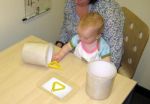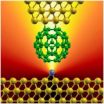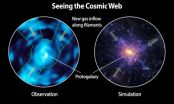(Press-News.org) SAN FRANCISCO -- The oldest sections of transform faults, such as the North Anatolian Fault Zone (NAFZ) and the San Andreas Fault, produce the largest earthquakes, putting important limits on the potential seismic hazard for less mature parts of fault zones, according to a new study to be presented today at the Seismological Society of America (SSA) 2014 Annual Meeting in Anchorage, Alaska. The finding suggests that maximum earthquake magnitude scales with the maturity of the fault.
Identifying the likely maximum magnitude for the NAFZ is critical for seismic hazard assessments, particularly given its proximity to Istanbul.
"It has been argued for decades that fault systems evolving over geological time may unify smaller fault segments, forming mature rupture zones with a potential for larger earthquake," said Marco Bohnhoff, professor of geophysics at the German Research Center for Geosciences in Potsdam, Germany, who sought to clarify the seismic hazard potential from the NAFZ. "With the outcome of this study it would in principal be possible to improve the seismic hazard estimates for any transform fault near a population center, once its maturity can be quantified," said Bohnhoff.
Bohnhoff and colleagues investigated the maximum magnitude of historic earthquakes along the NAFZ, which poses significant seismic hazard to northwest Turkey and, specifically, Istanbul.
Relying on the region's extensive literary sources that date back more than 2000 years, Bohnhoff and colleagues used catalogues of historical earthquakes in the region, analyzing the earthquake magnitude in relation to the fault-zone age and cumulative offset across the fault, including recent findings on fault-zone segmentation along the NAFZ.
"What we know of the fault zone is that it originated approximately 12 million years ago in the east and migrated to the west," said Bohnhoff. "In the eastern portion of the fault zone, individual fault segments are longer and the offsets are larger."
The largest earthquakes of approximately M 8.0 are exclusively observed along the older eastern section of the fault zone, says Bohnhoff. The younger western sections, in contrast, have historically produced earthquakes of magnitude no larger than 7.4.
"While a 7.4 earthquake is significant, this study puts a limit on the current seismic hazard to northwest Turkey and its largest regional population and economical center Istanbul," said Bohnhoff.
Bohnhoff compared the study of the NAFZ to the San Andreas and the Dead Sea Transform Fault systems. While the earlier is well studied instrumentally with few historic records, the latter has an extensive record of historical earthquakes but few available modern fault-zone investigations. Both of these major transform fault systems support the findings for the NAFZ that were derived based on a unique combination of long historical earthquake records and in-depth fault-zone studies.
Bohnhoff will present his study, "Fault-Zone Maturity Defines Maximum Earthquake Magnitude," today at the SSA Annual Meeting. SSA is an international scientific society devoted to the advancement of seismology and the understanding of earthquakes for the benefit of society. Its 2014 Annual Meeting will be held Anchorage, Alaska on April 30 – May 2, 2014.
INFORMATION: END
Magnitude of quake scales with maturity of fault, suggests new study by German scientist
2014-04-30
ELSE PRESS RELEASES FROM THIS DATE:
Out of sight but not out of mind: Babies transfer learning from pictures to real objects by 9 months
2014-04-30
Babies begin to learn about the connection between pictures and real-life objects early on. A new study has found that by 9 months, babies can learn about an object from a picture of it and can transfer that learning to the real object when they come across it.
The study, by researchers at Royal Holloway, University of London and the University of South Carolina, appears in Child Development, the journal of the Society for Research in Child Development.
"The study should interest any parent or caregiver who has ever read a picture book with an infant," says Jeanne L. ...
Babies recognize real-life objects from pictures as early as 9 months
2014-04-30
Babies begin to learn about the connection between pictures and real objects by the time they are nine-months-old, according to a new study by scientists at Royal Holloway, University of London, and the University of South Carolina.
The research, published today in Child Development, found that babies can learn about a toy from a photograph of it well before their first birthday.
"The study should interest any parent or caregiver who has ever read a picture book with an infant," said Dr Jeanne Shinskey, from the Department of Psychology at Royal Holloway. "For parents ...
New health system scorecard shows little progress among states from 2007-2012
2014-04-30
New York, NY, April 30, 2014—States made little progress in improving health care access, quality, and outcomes and lowering costs in the five years preceding implementation of the major coverage provisions of the Affordable Care Act (2007-2012), according to the Commonwealth Fund's third state health system scorecard. The majority of states declined or failed to improve on two-thirds of the 34 scorecard indicators that could be tracked over time.
Wide gaps among states persisted since the last scorecard, with top states sometimes performing two to eight times better ...
Direct current, another option to improve the electrical power transmission
2014-04-30
Electricity is normally transmitted by means of alternating current, but it is not the only way and not always the best one.In some cases, high voltage direct current (HVDC) is used. In Spain, for example, there is only one direct current line, the one that connects mainland Spain with the Balearic Islands; all the remaining ones transmit electricity by means of alternating current.
In fact, "direct current continues to be highly suitable for underwater and underground lines," asserted Marene Larruskain, one of the engineers in the UPV/EHU's GISEL group. Furthermore "less ...
A small connection with big implications: Wiring up carbon-based electronics
2014-04-30
Carbon-based nanostructures such as nanotubes, graphene sheets, and nanoribbons are unique building blocks showing versatile nanomechanical and nanoelectronic properties. These materials which are ordered in the nanoscale, that is, in the dimension of a millionth of millimetre, are promising candidates to envision applications in nanoscale devices, ranging from energy conversion to nano-electronic transistors. A good connection between carbon-based materials and external metallic leads is of major importance in nanodevice performance, an aspect where an important step has ...
Like puzzle pieces, 3-D genomics holds a key to classifying human diseases
2014-04-30
To solve a puzzle, you need to recognize shapes, patterns and a particular kind of order. In much the same way, researchers at McGill University have discovered that the 3D shape of a leukemia cell's genome holds a key to solving the puzzle of human diseases. The researchers report their findings in the open access journal Genome Biology.
McGill professor Josée Dostie, a researcher in the Faculty of Medicine in the department of Biochemistry, focused on the shape made by the region spanning the Homeobox A (HOXA) genes in human cells -- a set of 11 genes encoding proteins ...
Safe(bee) in numbers
2014-04-30
Bumblebees can distinguish between safe and dangerous environments, and are attracted to land on flowers popular with other bees when exposed to perilous situations, according to new research from Queen Mary University of London.
The study published in the journal Proceedings of the Royal Society B, shows that past experience of predation causes bumblebees to join other bees already safely feeding on flowers.
Co-author and PhD student Erika Dawson said: "Our experiment shows for the first time that when bees find themselves in these predator-infested environments ...
Molecular networks provide insights for computer security, Carnegie Mellon finds
2014-04-30
PITTSBURGH—The robust defenses that yeast cells have evolved to protect themselves from environmental threats hold lessons that can be used to design computer networks and analyze how secure they are, say computer scientists at Carnegie Mellon University.
Environmental "noise" is a key evolutionary pressure that shapes the interconnections within cells, as well as those of neural networks and bacterial/ecological networks, they observe in a paper to be published online April 30 by the Journal of the Royal Society Interface. The researchers factored this into an established ...
Bigger is not always better, but it helps, says new research on beetles
2014-04-30
Researchers at the University of Exeter have found that the probability of a burying beetle winning fights, for the small animal carcasses it needs, depends on a combination of early life experiences and the competition it faces as an adult.
These beetles use small dead animals, such as mice and songbirds, to provide food for their young and competition for a carcass can be fierce.
Previous work has found that success in such contests depends on how good your early adult life environment was, not just how big you are. However, in many animals food availability can ...
The intergalactic medium unveiled: Caltech's Cosmic Web Imager
2014-04-30
Caltech astronomers have taken unprecedented images of the intergalactic medium (IGM)—the diffuse gas that connects galaxies throughout the universe—with the Cosmic Web Imager, an instrument designed and built at Caltech. Until now, the structure of the IGM has mostly been a matter for theoretical speculation. However, with observations from the Cosmic Web Imager, deployed on the Hale 200-inch telescope at Palomar Observatory, astronomers are obtaining our first three-dimensional pictures of the IGM. The Cosmic Web Imager will make possible a new understanding of galactic ...





